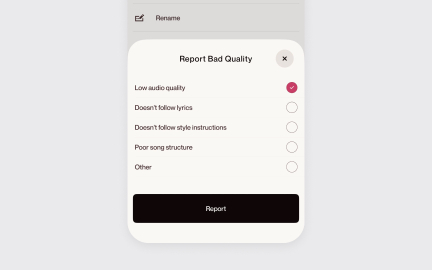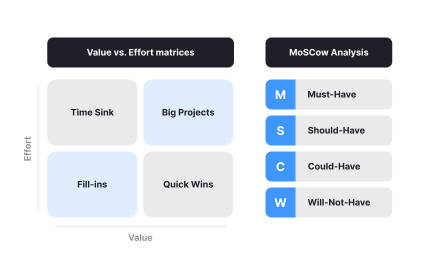Risk Assessment
Risk assessment identifies and evaluates product or business risks such as downtime, confusion, or delays, to reduce surprises and improve planning.
What is Risk Assessment?
Your projects and product development proceed without systematic evaluation of potential problems, leading to expensive surprises and preventable failures that could have been identified and mitigated through proactive risk analysis.
Most teams acknowledge that risks exist but don't analyze them systematically, missing opportunities to prevent problems that become expensive and disruptive when they occur during development or after product launch.
Risk assessment is the systematic identification, analysis, and evaluation of potential problems that could affect project success or product quality, enabling proactive mitigation strategies that prevent issues rather than just responding to problems after they occur.
Teams using thorough risk assessment achieve 60% fewer project surprises, 45% faster problem resolution, and significantly higher success rates because potential issues are addressed before they become critical problems.
Think about how aerospace companies conduct extensive risk assessment for aircraft design to prevent safety issues, or how financial services companies assess security risks to protect customer data and prevent costly breaches.
Why Risk Assessment Matters for Project Success
Your development projects encounter expensive problems that could have been prevented because potential risks weren't identified and mitigated systematically before they affected timeline, budget, or product quality.
The cost of skipping risk assessment compounds throughout project lifecycles. You encounter preventable problems, make emergency fixes that are more expensive than planned solutions, and lose competitive advantage through delays and quality issues that systematic risk management could have avoided.
What systematic risk assessment delivers:
Proactive problem prevention because identifying risks early enables mitigation strategies that prevent issues rather than requiring expensive emergency responses after problems affect projects.
When you anticipate risks systematically, problems become manageable challenges rather than project-threatening crises that require dramatic intervention.
Better resource planning through understanding of potential issues that might require additional time, budget, or expertise to resolve successfully.
Higher stakeholder confidence because risk assessment demonstrates thorough planning and professional project management that makes success more predictable and achievable.
Improved decision-making as risk analysis provides information about trade-offs and potential consequences that inform strategic choices about project scope and approach.
Enhanced team preparedness through risk awareness that helps team members recognize and respond to early warning signs before problems become severe.
Advanced Risk Assessment Strategies
Once you've established basic risk assessment capabilities, implement sophisticated risk analysis and management approaches.
Quantitative Risk Modeling: Use statistical analysis and scenario planning to evaluate risk probability and impact more precisely than qualitative assessment alone.
Integrated Risk and Opportunity Analysis: Combine risk assessment with opportunity identification to understand both potential problems and benefits of different strategic choices.
Continuous Risk Monitoring: Implement ongoing risk tracking that updates risk assessment dynamically as projects progress rather than conducting one-time risk analysis.
Cross-Project Risk Portfolio Management: Coordinate risk assessment across multiple projects to understand cumulative risk exposure and optimization opportunities.
Recommended resources
Courses

Product Discovery

Product Analytics

Introduction to Product Management
Lessons

Outlining Solutions

Ethics, Limitations, and Best Practices






